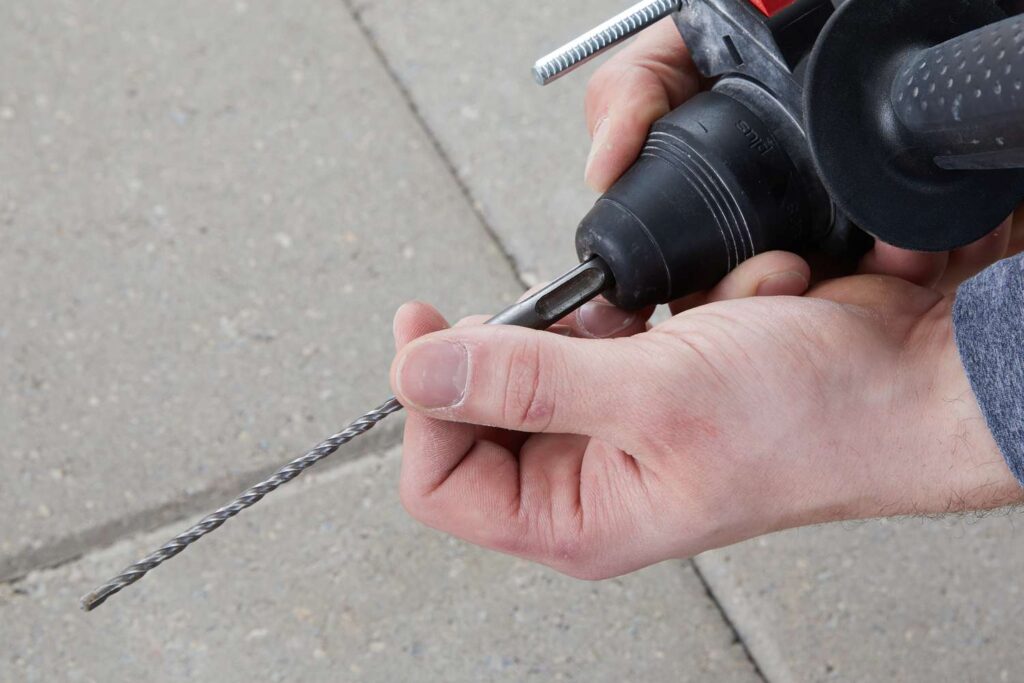Concrete is a robust and versatile building material widely used in various construction projects. However, one common question that arises is, “How long should I wait before drilling into fresh concrete?” The timing is crucial to ensure the integrity and durability of the concrete structure. In this comprehensive guide, we will delve into the factors influencing the curing process, the optimal waiting period, and best practices for drilling into fresh concrete.
Understanding the Concrete Curing Process
Concrete curing is the process by which the concrete hardens and gains strength over time. The curing process involves a chemical reaction between water and cement, known as hydration. This reaction is essential for the concrete to develop its desired properties, such as strength, durability, and resistance to environmental factors.
Stages of Concrete Curing
Initial Setting Phase (0-24 Hours): During the first 24 hours after pouring, concrete begins to set and harden. However, it is still in a relatively fragile state, and any disturbance can compromise its structural integrity.
Early Strength Development (1-7 Days): In the first week, concrete gains a significant portion of its strength. By the end of this period, it typically achieves about 50-60% of its ultimate strength. However, it is still not fully cured.
Final Curing Phase (7-28 Days): Concrete continues to gain strength over the next few weeks. By 28 days, it usually reaches its maximum strength, which is considered fully cured.
Factors Affecting Curing Time
Several factors influence the curing time of concrete, including:
Mix Design
The composition of the concrete mix, including the type of cement, water-cement ratio, and the presence of admixtures, can affect the curing time. High-performance concrete mixes may require different curing times compared to standard mixes.
Environmental Conditions
Temperature, humidity, and wind can significantly impact the curing process. Warmer temperatures accelerate hydration, while cooler temperatures slow it down. High humidity levels are beneficial for curing, as they prevent the concrete from drying out too quickly.
Concrete Thickness
Thicker concrete sections take longer to cure compared to thinner sections. The internal temperature and moisture content can vary within thicker slabs, affecting the overall curing time.
Use of Curing Compounds
Curing compounds or membranes can be applied to the concrete surface to retain moisture and promote even curing. These compounds can influence the curing duration and effectiveness.
Optimal Waiting Period for Drilling
Determining the optimal waiting period before drilling into fresh concrete depends on the specific application and the factors mentioned above. However, general guidelines can help ensure successful drilling without compromising the concrete’s integrity.
Minimum Waiting Period
It is generally recommended to wait at least 7 days before drilling into fresh concrete. By this time, the concrete has developed sufficient early strength to withstand the stress of drilling.
Ideal Waiting Period
For most applications, waiting 28 days is ideal. By this time, the concrete has reached its maximum strength and is fully cured, minimizing the risk of damage during drilling.
Special Considerations
For critical structural elements or load-bearing surfaces, consulting with a structural engineer is advisable. They can provide specific recommendations based on the project requirements and the concrete mix used.
Best Practices for Drilling into Fresh Concrete
To ensure successful and safe drilling into fresh concrete, follow these best practices:
Use the Right Equipment
Selecting the appropriate drilling equipment is crucial. Use a hammer drill or rotary hammer with a carbide-tipped masonry bit designed for concrete. These tools are specifically designed to handle the hardness and density of cured concrete.
Mark the Drilling Points
Before drilling, accurately mark the drilling points on the concrete surface. Use a chalk line or a marker to ensure precision. Double-check the measurements to avoid errors.
Start with a Pilot Hole
Begin by drilling a small pilot hole at the marked point. This initial hole serves as a guide for the larger drill bit, reducing the risk of the drill bit slipping or wandering.
Apply Steady Pressure
When drilling, apply steady and even pressure on the drill. Avoid forcing the drill bit, as excessive pressure can cause cracks or spalling on the concrete surface. Let the drill do the work.
Keep the Drill Bit Cool
Concrete drilling generates a significant amount of heat, which can damage the drill bit and the concrete. Periodically withdraw the drill bit and allow it to cool. Using water to cool the bit and reduce dust is also advisable.
Clean the Hole
After drilling, clean the hole thoroughly to remove any dust and debris. Use a vacuum or compressed air to ensure a clean surface for any anchors or fasteners.
Use Appropriate Anchors
Choose the right type of anchors or fasteners for the application. Expansion anchors, chemical anchors, and sleeve anchors are commonly used for securing objects to concrete. Follow the manufacturer’s instructions for installation.
Common Mistakes to Avoid
To prevent damage and ensure the longevity of the concrete structure, avoid these common mistakes when drilling into fresh concrete:
Drilling Too Soon
Drilling before the concrete has gained sufficient strength can lead to cracks, spalling, and compromised structural integrity. Always adhere to the recommended waiting period.
Using Incorrect Drill Bits
Using the wrong type of drill bit can result in inefficient drilling and damage to the concrete. Ensure that the drill bit is designed for concrete applications.
Overloading the Drill
Applying excessive force can overheat the drill bit and cause it to wear out quickly. Maintain a steady and controlled drilling pace.
Neglecting Safety Precautions
Always wear appropriate safety gear, including safety glasses, gloves, and a dust mask. Concrete dust can be harmful if inhaled, and flying debris can cause injury.
Conclusion
Drilling into fresh concrete requires careful consideration of the curing time and adherence to best practices. By understanding the concrete curing process, waiting for the appropriate period, and following proper drilling techniques, you can ensure a successful and damage-free project. Whether it’s for residential or commercial applications, patience and precision are key to achieving the best results.

